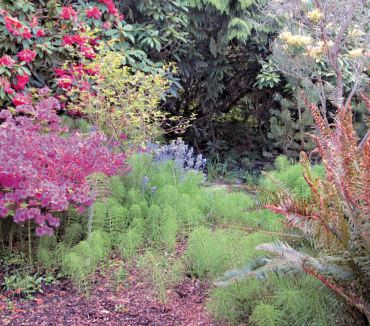
Weeds (sigh!), the curse of all gardeners, from beginner to professional. No one has immunity from them. Some plants that are considered weeds are valuable to herbalists, like the lowly dandelion or stinging nettle, but let’s talk about the common ones that are a nuisance to the home gardener. Weeds become a problem when they compete for sun, water and nutrients from desirable, cultivated plants in the garden. Aggressive weeds can literally take over and strangle ornamental plants.
How do you defend a garden against them? There is no magic or all-inclusive fix to get rid of weeds but there are methods and ways to keep ahead of them. Good weed management is a combination of things: proper site preparation, planting, mechanical control and suppression.
Get to Know Them
First, identify the problem weeds in your garden. Learn their lifecycle: perennial or annual, how they spread (roots, seeds or both). All of this information will guide you in how to eradicate them. Annual weeds tend to be heavy seeders and are easier to control if you remove the plants before they flower and go to seed. Perennial weeds have a tendency to spread by running root systems and become aggressive year after year if left unchecked.
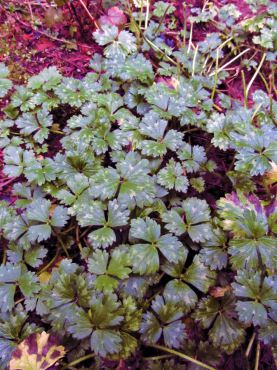
Planting Bed Preparation
Create new, weed-free planting beds by removing weeds before planting or adding soil amendments. Big pests such as blackberries and scotch broom can be really tough to remove without disturbing good plants, so do a thorough cleanup job prior to planting.
Intensive Planting
Plant abundantly to cover ground. Weeds love to take over open spaces and need competition to crowd them out. Plan your garden so that ornamental shrubs, perennials and groundcover will take up space faster than the weeds.
Plant spacing: loose or tight? First, decide if a higher density planting is desired for quick results and faster weed crowding or if a cheaper, slower result is OK (more weeding early on until plants fill in). The decision is also based on the growth habit of the plants. Fast-growing plants can fill in areas between slow-growing ones to create faster ground coverage. For example: Plant slow-growing shrubs at the correct spacing based on their growing habit then fill the open space around them with perennials that will probably need to be divided within three to five years anyway.
Healthy Soil
Good soil conditions help desired plants grow well and fill in spaces to keep weeds away. Maintain nourished soil by adding organic amendments, such as compost, every season. Abundant planting and healthy soils are the basis for long-term weed management.
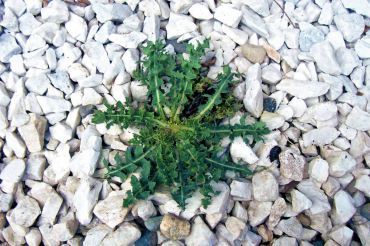
Now comes the part when the word weed becomes a verb. Take control! Never let weeds get a foothold in the soil. Avoid a battle of established weeds by weeding early in the season, as soon as they emerge, and make a habit of weeding a little every few days to avoid a massive workday later in the season.
Control Methods
Mechanical: Mechanical weed control is just a fancy way to say hand-pulling. Dig, hoe, pull, yank, scrape — you name it — are all ways to manually get rid of them. This type of control is particularly effective against young, annual weeds. Absolutely make sure to get them before they flower and set seed.
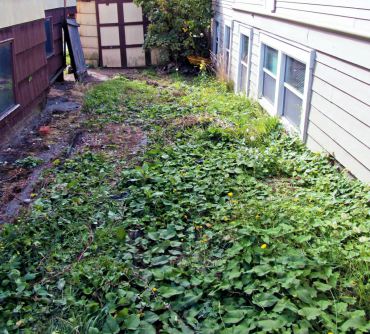
When you see a bright, cheerful dandelion in the lawn, don’t just smile and pass by, pull it. Within a day, it could be blowing fluffy seed heads all over the place. After pulling weeds or tilling the soil, check back every week to catch any weed seeds that have germinated or perennial weeds that have been brought to the surface.
Suppression: Just what the word means. Smother them; take away what they need to thrive. A good tool that does double duty is mulch. Organic mulch is made of natural, decomposable substances such as bark, wood chips, leaves, newspaper or well-rotted manures.
A 3- to 4-inch layer is the best depth to deprive weeds of light. Use a coarse-textured type of mulch for best results. Mulches that are too fine will decompose rapidly and not maintain suppression depth for a decent length of time. Pile it properly. Mulches that are too thick will stay wet in rainy periods and discourage good soil microbes, plus they create a layer that can capture weeds.
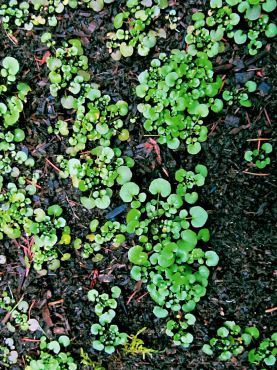
Organic, nutrient-rich mulches such as well-rotted manures nourish the soil and suppress weeds when used at the correct depth. Inorganic mulches such as gravel, pebbles, black plastic and landscape fabrics do not decompose. Avoid landscape plastic and fabric in planting areas. It is a short-term fix that will become more work in the long run. Use landscape fabrics in areas where there are no plantings and inorganic material, such as rock pathways. Keep control of weeds in gravel by keeping watch. Weed seeds will blow in a get trapped in the rock. Realize that gravel in the garden will require maintenance from time to time. Control unwanted plants by using a gentle, natural weed killer or remove them by hand.
What about chemical control? Chemicals kill weeds, yes, but you also need to be informed about what else it kills. Choose an organic method first. The environment and you will be much better for it. The safest and most effective control is diligence and work.
The good news for all that work is that attentiveness to weed problems will make them less persistent — meaning less work. The use of a chemical becomes needed when weeds have been allowed to overrun an area and threaten valuable land and crops. If you choose to use chemical control, please read the label and understand what, how, when and why. It all really does matter. There is no single herbicide that will do it all, no matter what the companies that make them tell you.
Resources for weed problems and identification
- Your county weed board or the Washington State Noxious Weed Control Board
- Pacific Northwest Weed Management handbook image collection
- Your county WSU extension program





























